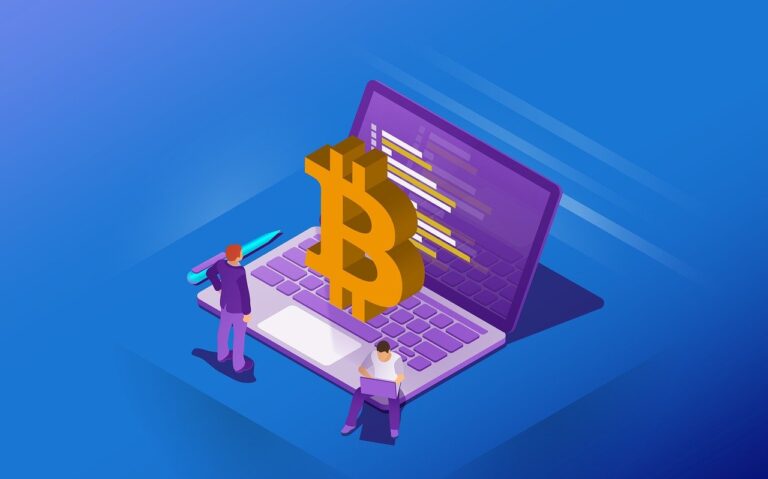The world of cryptocurrency offers exciting opportunities for financial freedom, investment, and innovation. However, it also comes with significant risks, especially regarding the security of your digital assets. Unlike traditional banking systems where lost funds might be recoverable, crypto operates on a decentralized model. If you lose access to your coins or they get stolen, there is usually no central authority to turn to.
In this comprehensive guide, we will cover how to keep your crypto safe by understanding wallets, private keys, and essential security best practices. Whether you’re a seasoned investor or a beginner, securing your crypto should always be your top priority.
Why Security in Crypto Matters
Cryptocurrency transactions are irreversible and pseudonymous, making them a target for hackers and scammers. Over the years, billions of dollars have been lost due to:
-
Exchange hacks
-
Lost private keys or seed phrases
-
Phishing attacks
-
Malware
-
Social engineering
Proper security measures are critical because even a small mistake can result in permanent loss. Security is not just a feature—it’s a responsibility.
Understanding Crypto Wallets
A crypto wallet doesn’t “store” cryptocurrency in the way a physical wallet holds cash. Instead, it stores private keys that give you access to your digital assets on the blockchain.
Types of Crypto Wallets
Wallets can be broadly classified into two categories:
1. Hot Wallets (Internet-connected)
Hot wallets are connected to the internet and are ideal for frequent trading or transactions.
-
Examples: Web wallets, mobile apps, desktop wallets, exchange wallets
-
Pros: Easy to access and use
-
Cons: More vulnerable to online threats
Popular Hot Wallets:
-
MetaMask
-
Trust Wallet
-
Coinbase Wallet
-
Electrum
2. Cold Wallets (Offline storage)
Cold wallets are not connected to the internet, making them much safer from online attacks.
-
Examples: Hardware wallets, paper wallets, air-gapped computers
-
Pros: Highly secure from hacking
-
Cons: Less convenient for frequent transactions
Popular Cold Wallets:
-
Ledger Nano S/X
-
Trezor Model T
-
Keystone
-
Paper wallets (manual)
Public and Private Keys: The Core of Crypto Ownership
Public Key
This is your crypto address, similar to your bank account number. You can share it with others to receive funds.
Private Key
This is your password to access your crypto funds. Anyone with this key can control and transfer your assets.
Never share your private key. Think of it as your crypto master key.
In many wallets, your private key is represented as a seed phrase (usually 12 or 24 random words). This phrase is your backup—if your device is lost, damaged, or stolen, you can recover your wallet with it.
Best Practices for Securing Your Crypto
1. Use Hardware Wallets for Long-Term Storage
Hardware wallets are physical devices designed to store private keys securely.
-
They keep keys offline.
-
They require physical interaction (e.g., pressing a button) to confirm transactions.
-
Most are encrypted and protected by a PIN.
Tip: Buy hardware wallets directly from the manufacturer. Avoid third-party sellers to prevent tampering.
2. Back Up Your Seed Phrase Securely
When setting up a wallet, you’ll be given a seed phrase. This phrase is the only way to recover your funds if the wallet is lost or broken.
Do:
-
Write it down on paper (not digital format).
-
Store it in a fireproof, waterproof safe.
-
Consider using metal seed backup plates for durability.
Don’t:
-
Take a screenshot or store it on cloud storage.
-
Share it with anyone.
3. Enable Two-Factor Authentication (2FA)
Where possible, enable 2FA on all wallets, exchanges, and related services.
Recommended 2FA methods:
-
Authenticator apps like Google Authenticator or Authy
-
Hardware-based 2FA (e.g., YubiKey)
Avoid using SMS-based 2FA, which is vulnerable to SIM-swapping attacks.
4. Be Cautious with Exchanges
While exchanges are convenient, they are also attractive targets for hackers.
Tips:
-
Never store large amounts of crypto on exchanges.
-
Only use reputable, regulated exchanges.
-
Enable all available security features (e.g., withdrawal whitelist, 2FA, email confirmations).
Remember: “Not your keys, not your coins.” If you don’t control the private keys, you don’t truly own the crypto.
5. Avoid Phishing and Scams
Scammers often impersonate wallets, exchanges, or support teams.
Red flags:
-
Emails or DMs asking for your private key or seed phrase
-
Fake airdrops or giveaways that ask for funds upfront
-
Fake support representatives in Telegram, Discord, or Reddit
Tips:
-
Bookmark official sites.
-
Never click on suspicious links.
-
Double-check URLs for typos (e.g., coinbsae.com instead of coinbase.com).
6. Keep Software Updated
Outdated software can contain vulnerabilities.
-
Always update wallet apps, firmware, antivirus, and operating systems.
-
Only download wallet software from official sources.
7. Use a Dedicated Device for Crypto
For high-security setups, consider using a device that’s solely for crypto use—no browsing, emails, or third-party apps.
An air-gapped computer (never connected to the internet) can serve as an ultra-secure cold storage tool.
Advanced Security Practices
Multi-Signature Wallets (Multisig)
Multisig wallets require multiple private keys to authorize a transaction.
Use case: A company may require 3 out of 5 team members to approve fund transfers.
Benefits:
-
Reduces single-point-of-failure
-
Enhances collaborative control over shared funds
Platforms like Gnosis Safe and BitGo support multisig setups.
Shamir’s Secret Sharing (SSS)
This cryptographic technique allows you to split your private key or seed phrase into multiple pieces. A predefined number of pieces (e.g., 3 out of 5) must be combined to recover the key.
Use case: Distribute shares among trusted parties or locations for secure redundancy.
What to Do if You Lose Access or Get Hacked
Unfortunately, if your private key or seed phrase is compromised, recovery is almost impossible. But here are steps to minimize damage:
-
Immediately move funds to a secure wallet if you suspect compromise.
-
Report theft to relevant platforms or exchanges (if involved).
-
Check transaction history on a blockchain explorer to track fund movements.
-
Educate yourself to prevent future breaches.
Real-World Examples of Crypto Losses
-
Mt. Gox (2014): Over $450 million in Bitcoin lost due to exchange mismanagement and hacking.
-
QuadrigaCX (2019): CEO’s death led to $190 million locked in wallets—allegedly only he had access.
-
Users losing funds by storing seed phrases on Google Drive or email accounts that were later hacked.
These examples highlight the critical importance of self-custody and secure storage.
Common Myths About Crypto Security
“If I use a wallet app, I don’t need to back up my keys.”
False. Mobile and desktop apps can be lost or corrupted. Your seed phrase is your only backup.
“Storing crypto on exchanges is fine—they’re insured.”
Some exchanges offer limited insurance, but most do not cover user negligence or major hacks. Exchanges are not banks.
“I can remember my seed phrase.”
Even if you can, memory is not reliable over time. Use a written backup stored securely.
Security Is Your Responsibility
In the decentralized world of crypto, you are your own bank. This freedom comes with responsibility. By understanding how wallets and keys work and following best practices, you can significantly reduce the risk of losing your assets.
To recap:
-
Use hardware wallets for long-term storage.
-
Protect your seed phrase like a treasure.
-
Avoid keeping large balances on exchanges.
-
Stay vigilant against scams and phishing attempts.
-
Consider advanced tools like multisig or Shamir’s Secret Sharing for added resilience.
By taking these steps, you’ll not only protect your investments but also help create a safer and more trustworthy crypto ecosystem.



